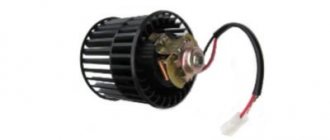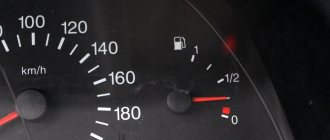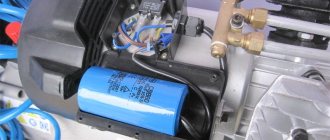In general, the causes of a blown main cylinder block or cylinder head gasket can be divided into three main categories:
- Overheat
- Pre-ignition/detonation
- Initially incorrect installation
There are several reasons that can lead to any of these conditions. But recognizing that one or more of them were present before the head gasket failed will help you figure out the root cause and fix the problem to prevent the new one from failing too. If any of these conditions are present right now, you can make repairs soon and avoid costly repairs.
What is a cylinder head gasket - it is a gasket for the Main Cylinder Block of a car, it prevents atmospheric oxygen from the street and dust from entering the fuel combustion chambers of the car; if this gasket is leaking, the engine begins to work incorrectly, “suck air” and lose its power.
Severe cylinder head gasket operating conditions
Of all the seals in your car's engine, the head gasket has one of the toughest jobs.
To begin with, the gasket must seal the oil and coolant ports and combustion chambers to prevent internal and external leaks. It must also withstand extreme temperatures and pressures that are constantly changing. The cylinder head must withstand temperatures that can reach 400 °F (204 °C) between the cylinder and block, and 2,000 to 4,000 °F (1,093 to 2,204 °C) in the combustion chamber.
Then, in addition to extreme temperature changes, it must withstand extreme pressures that go from negative (vacuum) to positive (typically 1,000 psi (6,895 kPa) or more) as each piston goes through its four-stroke cycle.
In addition, the head gasket must resist corrosion and chemicals and withstand the frictional force from the cylinder head (especially aluminum cylinders) that increases from cold to operating temperature. It withstands all this, eliminating minor distortions between the surface of the head and the block and vibration during engine operation.
Due to the harsh conditions in which it must operate, head gasket design has improved significantly in recent years, increasing pressure withstanding and physical resistance in variable temperature environments.
Despite this, a bad gasket can lead to extreme increases in temperature or pressure caused by engine performance problems.
This guide discusses the main reasons that can lead to its failure. Knowing the different sources of potential problems can help you diagnose the problem early and understand why it's happening.
Tips and tricks
If diagnostics show that the head gasket is burnt out, then further operation of the car is highly not recommended. Possible consequences for the engine and the costs of eliminating them can be tens of times greater than the cost of a cylinder head gasket and the work to replace it. For different car models, the cost of the gasket can range from 15 to 50 USD. Mounting bolts will cost an average of 10-20 USD.
Separately, it is worth paying attention to the question of whether the cylinder head gasket can be reused. There cannot be a definite answer even if the gasket is in perfect condition. As practice shows, if it is necessary to remove the cylinder head, it is better to carry out a preventive replacement of the gasket and fasteners.
Finally, we add that increased attention must be paid to the quality of the gasket. Taking into account the complexity and amount of work involved in dismantling the cylinder head, it is better to immediately buy a branded original gasket or an analogue from a well-known manufacturer than to remove the head again after 10-15 thousand km. The purchase of a gasket of proper quality will be fully justified even taking into account the higher cost (25-50%) compared to more affordable budget options in a group of similar products.
Getting Clues from a Blown Gasket
When repairing - examining the old gasket can give you some clues about what went wrong:
Overheating test:
- Look for damaged areas on the old seal.
- Measure the thickness of undamaged areas.
- Compare both measurements.
- If the damaged areas are thinner than the undamaged areas, overheating or hot spots where breakdown or burnout has occurred are more likely.
Check for detonation damage:
- If the holes around the cylinders (pistons) are destroyed, damaged or burned, then most likely it was overheating or detonation that led to the damage.
The cylinder head gasket has blown - how to find out?
A breakdown of the cylinder head gasket leads to such unpleasant consequences as engine overheating, poor operation of the stove, the appearance of exhaust gases from under the hood of the car, the appearance of an emulsion in the engine oil, the appearance of white smoke from the exhaust pipe and some others. If the above symptoms or one of them appear, you need to check the cylinder head gasket. There are several ways to do this. Next, we will look at why the cylinder head gasket breaks, what consequences this leads to, and what to do if this trouble happens to your car’s engine.
Preventing premature cylinder head gasket failure
Fortunately, there are some common sources of breakdown that appear more often, and you, as the owner of the car, can understand from them exactly what the problem is. Knowing these engine operating conditions can save you from cylinder head failure and costly repairs.
Here are some things you can do to prevent problems:
- When you notice that the engine is starting to overheat, fix the problem as soon as possible and make the necessary repairs.
- Open the hood frequently and check the engine coolant and oil levels. If the coolant or oil level drops frequently, locate the source of the leak and make the necessary repairs.
- Follow your vehicle manufacturer's recommendations and change the coolant and engine oil according to mileage and change time recommendations.
- Use only the type of antifreeze and engine oil recommended by your vehicle manufacturer.
What to do when the cylinder head gasket is damaged
If it turns out that the gasket is broken, it must be changed urgently.
There are no options here. It is not too expensive, although you will have to pay much more for the work to replace it, given that this process is quite complex and time-consuming. It is highly undesirable to continue driving a car with a broken cylinder head gasket, since one problem will soon lead to others. Head deformation due to overheating, rupture of cooling system hoses, engine jamming - this is not a complete list. Accordingly, the cost of repairs will increase.
When purchasing, do not worry too much about the gasket material; it has little effect on the durability of the part. The quality of its manufacture is much more important, because, of course, you do not want to encounter the same problem again after some time. Therefore, it is better to buy a branded gasket or an analogue from a reliable manufacturer. And don't forget to buy new bolts.
Do not install an old gasket, even if it is not damaged, since repeated compression does not guarantee a reliable and tight seal.
If there are defects on the mating planes of the cylinder block and head, they will need to be sanded. It is better to use a special precision machine, although with experience and patience it is possible to grind using a grinding wheel or even sandpaper. The layer removed as a result of grinding must be compensated by the increased thickness of the gasket. This must be taken into account when purchasing.
If antifreeze and engine oil are mixed as a result of a breakdown, you will have to flush the lubrication system and cooling system and replace both working fluids.
Dealing with a Potential Fault
A failed head gasket is an expensive repair. Not to mention that while the work is going on, you will in no way be able to use your car.
If you do experience this issue, be sure to find out the cause of the problem before installing a new one to prevent the new gasket from failing as well.
Unfortunately, there can be many reasons why it might fail. Modern car engines include many systems, and a malfunction in several of them can have bad and devastating consequences for the fuel pump. However, now you know about the common reasons that can cause such a failure.
Other obvious signs of a broken gasket
In the case where obvious oil leakage or exhaust gas breakthrough could not be diagnosed, you have to deal with more complex consequences of gasket burnout:
- White emulsion on the oil dipstick or under the oil filler plug on the timing cover. This indicates that coolant entered the lubrication system through a damaged gasket. At the same time, the oil level will rise and the antifreeze level will fall. This will be another clue to find out the causes of the malfunction. In most cases, repairs are limited to replacing the gasket and oil with antifreeze, although sometimes cracks occur in the oil channels themselves or in the water jacket channels, then replacing the block or head is in order.
A car engine has two important parts: the cylinder block and the cylinder head (cylinder head). And they are connected to each other by a cylinder head gasket. Its main task is to seal combustion chambers and channels through which antifreeze passes. When the cylinder head gasket is punctured, various problems appear in the engine.
Each engine model is equipped with a cylinder head gasket. It can be made of thin sheet metal or reinforced paronite with metal edging for the holes for the combustion chambers. The walls between some of the holes in the gasket are quite thin, so the slightest mistake during installation or replacement will lead to their rapid burnout.
The main guarantee of the durability of the cylinder head gasket is the ideal contact plane between the head and the cylinder block. Adjacent surfaces must be clean, free of holes and roughness. The second important point for extending the life of the gasket will be to follow a certain order of tightening the cylinder head bolts. For this, motor manufacturers, as well as gasket manufacturers, provide a diagram for screwing in fasteners indicating the tightening torque.
Why does the cylinder head gasket break?
What does a blown cylinder head gasket look like?
Most often, the cylinder head gasket breaks due to overheating during vehicle operation. Under the influence of high temperature, the lid may “lose” its working position. Because of this, the tightness of contact with the cylinder head cover is disrupted and depressurization occurs. Changes in shape due to overheating are typical for aluminum lids. Cast iron lids do not suffer from such a “disease” because they are resistant to high temperatures. They can only crack, but this happens extremely rarely. Changes in geometry due to overheating also happen with iron-asbestos cylinder head gaskets.
We recommend: Wheel alignment adjustment: is it difficult to do it yourself?
Gasket failure can also be caused by improper tightening of the bolts. Moreover, both too weak and too strong a puff has a bad effect. In the first case, exhaust gases leak from the block (and they also have a destructive effect on the gasket itself, reducing its service life). By tightening the bolts too much, you can damage the gasket material.
Maximum accuracy when tightening can be achieved using a dynamometer and observing the sequence of tightening the bolts. Detailed information on these issues should be found in the user manual.
On most vehicles, you should tighten the center bolts first, then the others. In this case, it is important to follow the phased twisting process. For example, first all fasteners are pressed to 3 kgf, then (again from the central to the outer ones) - to 6 kgf, the next circle - to 9 kgf.
Thermostat
The cause of overheating of the coolant may also be the thermostat - this part in the cooling system is required to maintain a stable temperature.
When the engine is still cold, all the antifreeze circulates in a small circle, bypassing the radiator, so the engine warm-up time with a closed thermostat is significantly reduced.
When the required temperature is reached, the valve of the thermostatic device is activated (opens), and the antifreeze passes in a large circle through all the pipes of the cooling system and the radiator.
This cools the engine.
If the thermostat does not open in time, boiling of the antifreeze is inevitable; the liquid will not cool to the required limit without passing through the radiator.
In any case, you need to carefully monitor the devices and prevent overheating.
How to make sure the thermostat is working properly?
First of all, you should make sure that all large radiator pipes (upper and lower) are heated evenly.
If some of them remain cold after warming up, check the functionality of the thermostat.
To check the temperature control device, it must be removed from the vehicle. Removing the thermostat is not difficult, so let’s focus on diagnostics.
To check you will need any utensils, an electric heater and a thermometer.
We pour water into the container, place the part and water in it and look at the thermometer when the thermoelement begins to open.
We recommend: Replacing the heater valve on a VAZ-2113, 2114, 2115
The temperature range at which the valve should operate is indicated for each thermostat and depends on the specific car model.
How to find out if the cylinder head gasket is blown
You can determine whether the cylinder head gasket is blown by using one of several methods. In this case, diagnostics are simple and can be done by anyone, even a novice and inexperienced driver.
To check the integrity of the gasket, you must do one of the following:
With the engine running, visually inspect whether smoke is coming from the gap between the cylinder head and the cylinder head. Also listen to see if there are loud ringing sounds coming from there that were not there before.
Inspect the surfaces of the radiator caps and expansion tank of the cooling system, as well as the neck for filling oil into the engine. To do this, you just need to unscrew them and visually inspect them. If antifreeze gets into the engine, there will be a reddish emulsion on the oil filler cap. If oil gets into the antifreeze, then there will be oily deposits on the radiator or expansion tank caps.
White smoke from the exhaust
Make sure there is no white smoke coming out of the exhaust pipe (it is actually steam). If it is, then there is a high probability of gasket burnout. Especially if the exhaust smoke has a sweetish smell (if you use antifreeze as a coolant rather than ordinary water). At the same time, the coolant level in the radiator usually drops. This is an indirect sign of the mentioned malfunction.
Check whether exhaust gases are entering the cooling system. This can be done in two ways - visually and using available tools. In the first case, it is enough to unscrew the cap of the radiator or expansion tank and see if there is intense seething there. However, even if intense “geysers” are not observed there, it is necessary to use available means. Most often, a common condom is used for this.











